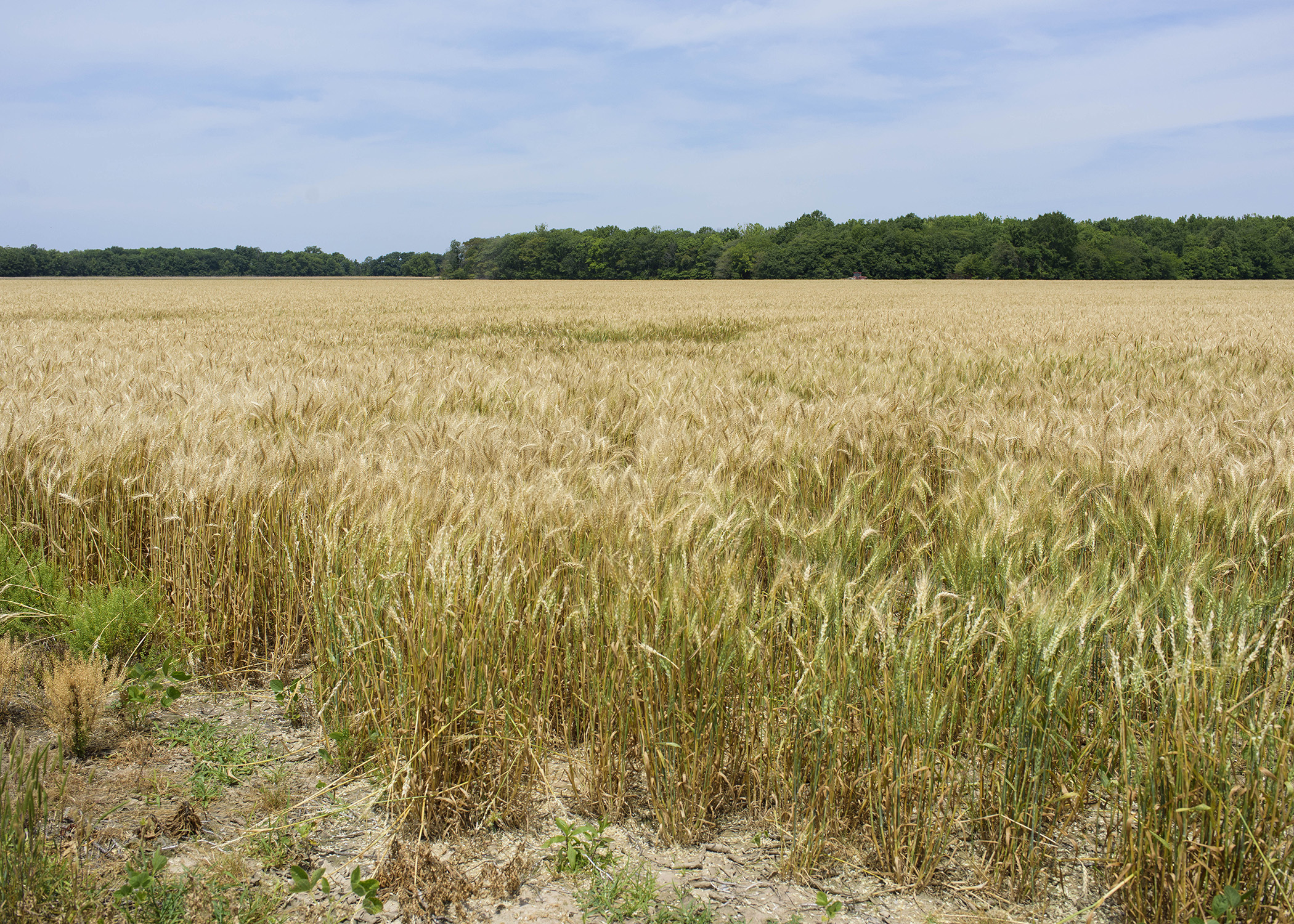Starkville, Mississippi, USA
July 15, 2016

Mississippi’s growers harvested about 80,000 acres of wheat and averaged 58 bushels per acre in 2016. These amber waves of grain are in a Coahoma County, Mississippi, field on May 23, 2016. (Photo by MSU Extension Service/Kevin Hudson)
Reduced acreage, average yields and low prices have added up to another tough year for Mississippi wheat farmers.
The state’s wheat appears to be on track for a third consecutive year in which the value of production was cut in half from the previous year.
Mississippi State University Extension Service agricultural economist Brian Williams said wheat production values were $154.5 million in 2013, $71.7 million in 2014 and $31.5 million in 2015.
“Unfavorable prices and fall weather discouraged growers from planting as much wheat this year,” he said. “They harvested 80,000 acres this summer, compared to 150,000 last year.”
Low prices are providing a double whammy. Williams said prices are down about 20 percent from last year and have been on a slide lately.
“Wheat futures topped out at $5.30 per bushel in early June before falling to nearly $4.20 the first week of July,” he said. “A lot of what has been driving wheat markets has been large global supplies. Wheat demand has also picked up some, particularly for livestock feed, but demand has not been able to keep up with supply.”
Coahoma County grower David Wade said his wheat yields took a hit this spring from excessive rainfall. He lost some acreage completely, and the rest of his crop was stunted.
“Every crop likes water, but they don’t like too much water,” he said.
Extension corn and wheat specialist Erick Larson said much of the state’s wheat struggled through saturated soils in March and April. While disease pressure was light, rainy conditions hampered the Mississippi wheat crop in several ways.
“That was the opposite problem we had at planting time when it was too dry for seeds to germinate,” Larson said. “When rains arrived in November, we had too much rain, so that didn’t provide a good planting window. By the third week of November, farmers had abandoned plans to plant wheat.”
Larson said there was also substantial flooding as a result of heavy rainfall over several days around March 10 that may have stunted or killed some wheat.
“Most of our wheat was likely planted on well-drained or high ground since we had extremely wet conditions during November at planting, but this flooding certainly did no favors for the crop,” he said
Larson said this year’s yields were generally good, but not record setting.
“Average yields were around 58 bushels per acre. They would have been better if spring conditions had not been so wet,” he said. “In addition to stunting plants, rains also interfere with pesticide and fertilizer applications.”
The U.S. Department of Agriculture is forecasting 4.06 million bushels for Mississippi, down 30 percent from last year.